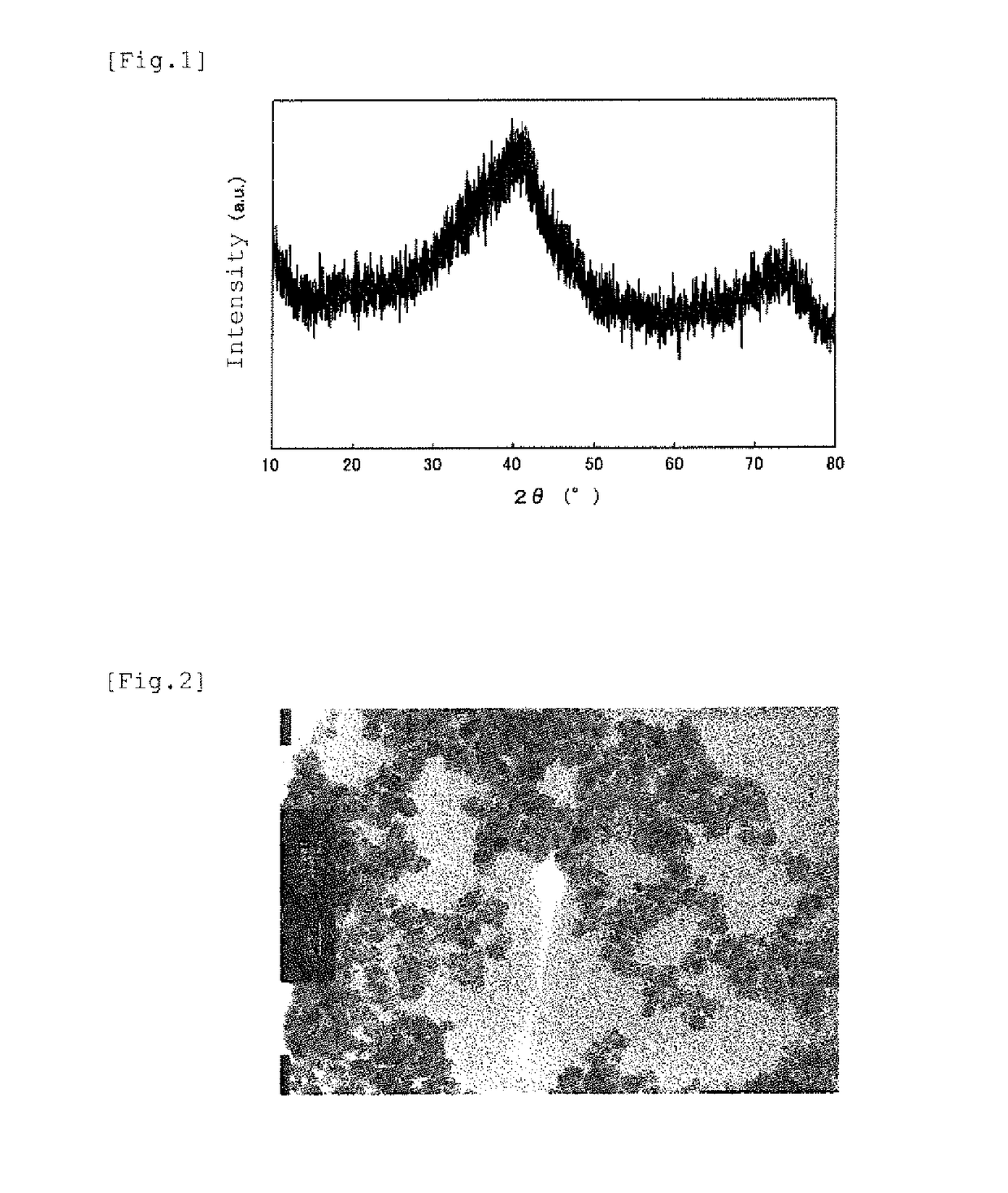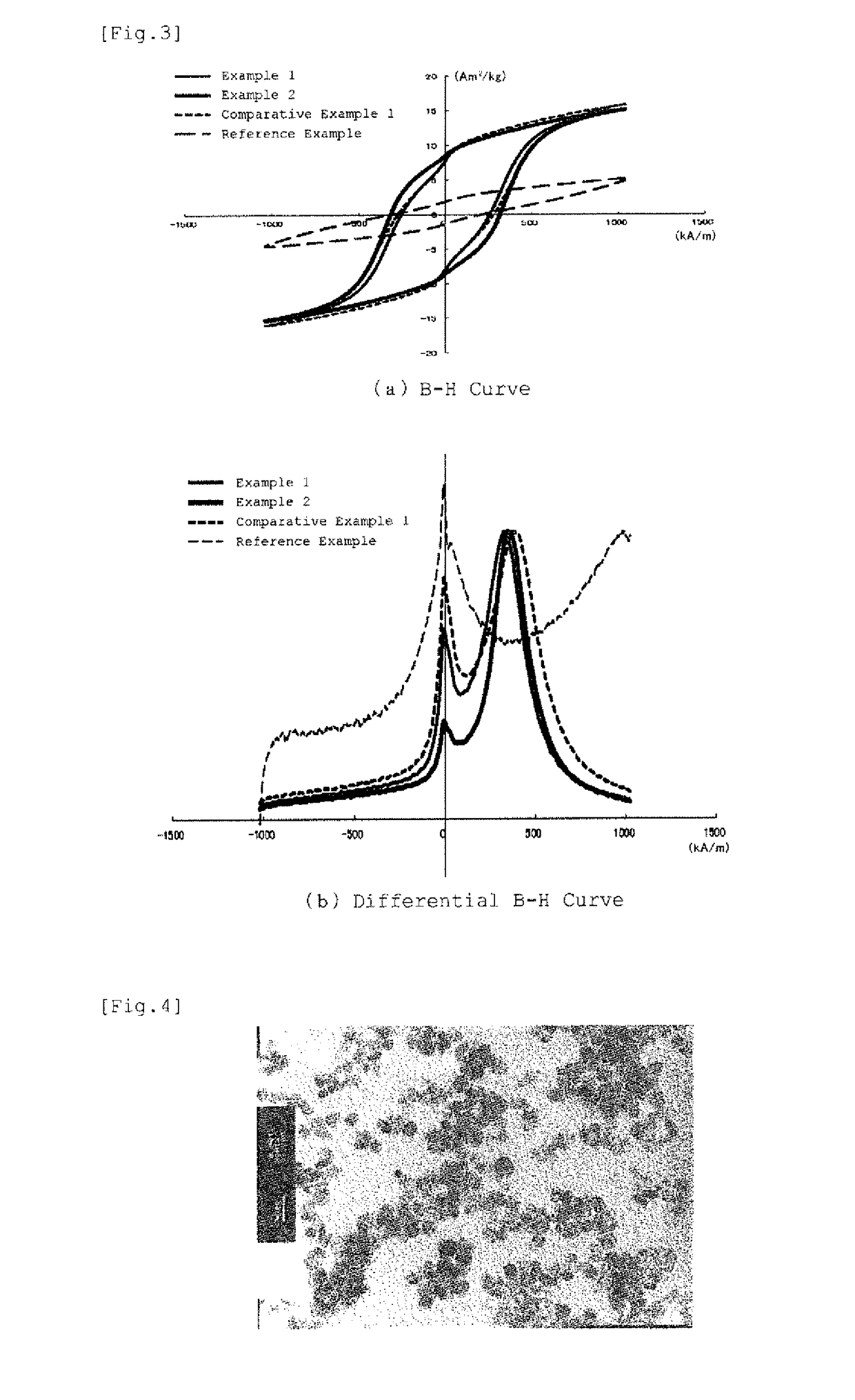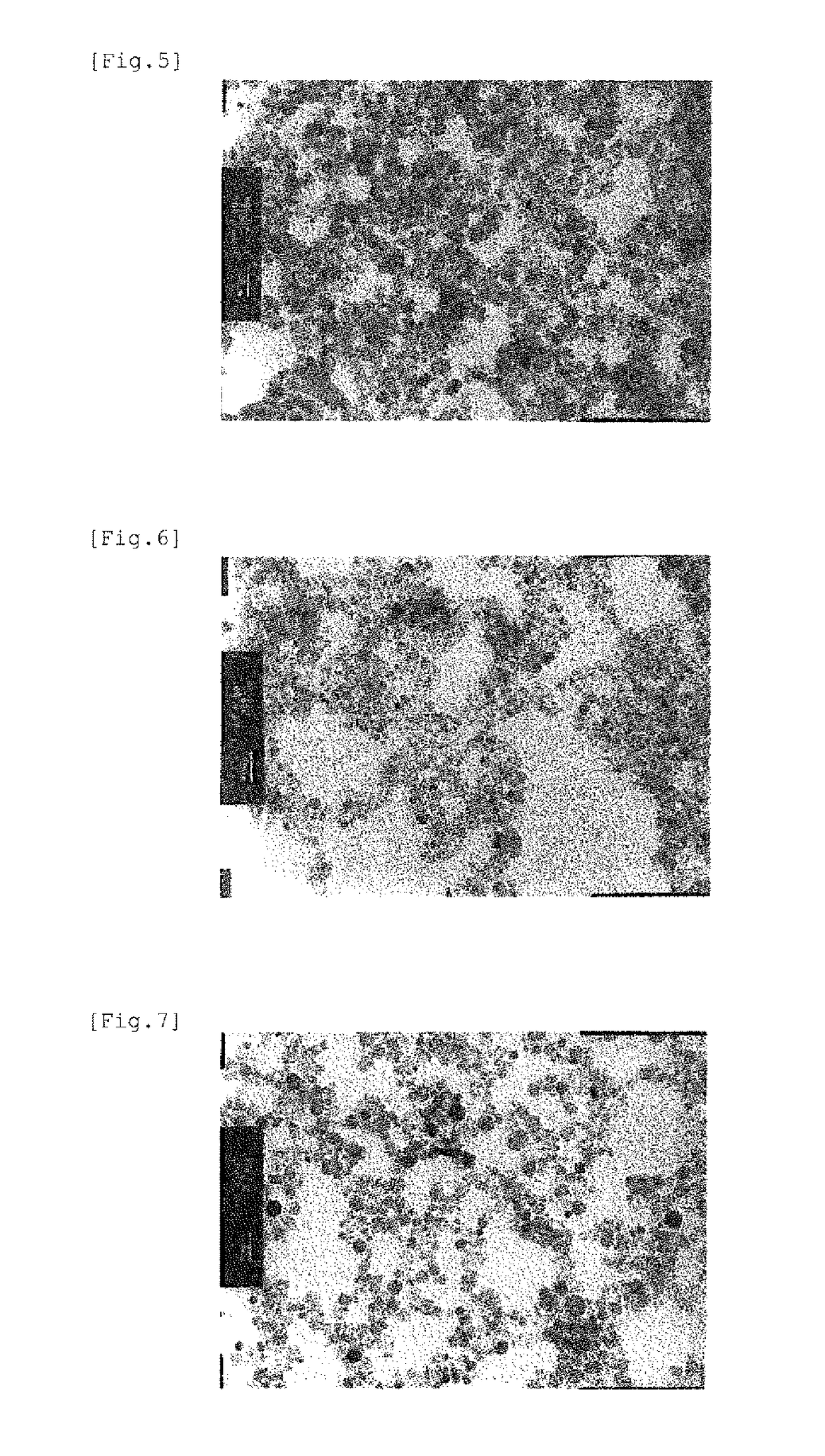Iron-based oxide magnetic particle powder and method for producing iron-based oxide magnetic particle powder
a technology of magnetic particle powder and iron-based oxide, which is applied in the field of the method of producing iron-based oxide magnetic particle powder, can solve the problems of environmental stability and thermal stability degradation, deterioration of the magnetic characteristics of the magnetic particles in the use and storage environment, etc., and achieves narrow coercive force distribution, increase the recording density of the magnetic recording medium, and enhance the recording characteristics
- Summary
- Abstract
- Description
- Claims
- Application Information
AI Technical Summary
Benefits of technology
Problems solved by technology
Method used
Image
Examples
example 1
[0112]In a 30 L reaction tank, 2910.27 g of iron (III) nitrate nonahydrate of a purity of 99.5%, 786.25 g of a gallium (III) nitrate solution having a Ga concentration of 10.3%, 65.76 g of cobalt (II) nitrate hexahydrate of a purity of 97%, and 69.04 g of titanium (IV) sulfate having a Ti concentration of 15.2% were dissolved in 31368.68 g of pure water under conditions of air atmosphere and 40° C. with mechanical stirring by a stirring blade. The molar ratio of the metal ions in the charged solution, Fe:Ga:Co:Ti is 1.635:0.265:0.050:0.050. Incidentally, the numerals in the parentheses following the reagent names represent the valence of the metal element.
[0113]In air atmosphere at 40° C., with mechanical stirring by the stirring blade, 1595.91 g of a 22.09% ammonia solution was added at once and stirring was continued for 2 hours. The liquid was brown and turbid at an early stage of the addition, but came into a clear brown reaction liquid after 2 hours, and the pH was 1.67.
[0114]N...
example 2
[0124]Silicon oxide coating of an iron-based oxide magnetic particle powder coated with a silicon oxide obtained by the same procedure as in Example 1 was removed by the removal method described above, and then the powder was washed with an ultrafiltration membrane having an UF molecular cutoff of 50,000 until the conductivity became 1.476 mS / m or less.
[0125]After pure water was added to the obtained magnetic powder-containing slurry and a NaOH aqueous solution was added to make the pH 11.0, an ultrasonic dispersion treatment was performed using an ultrasonic washing machine (Yamato 5510 manufactured by Branson (Yamato Scientific Co. Ltd.)) for 1 hour, and then a centrifugation treatment was applied using an R10A3 rotor of a centrifugal machine (himac 21G2 manufactured by Hitachi Koki Co. Ltd.) at 8000 rpm for 30 minutes. After the precipitation containing coarse particles was removed, the same operation was repeated twice, thereby obtaining a slurry solution in which coarse particl...
examples 3-9
[0137]In Examples 3-9, iron-based oxide magnetic particle powders were obtained by the same procedure as in Example 1 with the metal ion charging ratio varied. Incidentally, the molar ratios of the hydroxycarboxylic acid to the trivalent iron ion amount in the Examples were 0.119 in Example 3, 0.122 in Examples 4, 5 and 6, 0.118 in Example 7, 0.111 in in Example 8, and 0 138 in Example 9. In the Examples, although the amount of the alkali aqueous solution required for neutralization differs a little depending on the charging composition, the pH values reached in the first state and the second state were made almost equal to those in Example 1. Among the Examples, Example 9 is of the monoelement substitution type, and Example 6 is of the dielement substitution type. TEM photographs of the iron-based oxide magnetic particle powders obtained in Example 3 and Example 5 are shown in FIG. 7 and FIG. 8, respectively, and (a) B-H curves and (b) differential B-H curves for the iron-based oxi...
PUM
| Property | Measurement | Unit |
|---|---|---|
| mean particle diameter | aaaaa | aaaaa |
| pH | aaaaa | aaaaa |
| pH | aaaaa | aaaaa |
Abstract
Description
Claims
Application Information
 Login to View More
Login to View More - R&D
- Intellectual Property
- Life Sciences
- Materials
- Tech Scout
- Unparalleled Data Quality
- Higher Quality Content
- 60% Fewer Hallucinations
Browse by: Latest US Patents, China's latest patents, Technical Efficacy Thesaurus, Application Domain, Technology Topic, Popular Technical Reports.
© 2025 PatSnap. All rights reserved.Legal|Privacy policy|Modern Slavery Act Transparency Statement|Sitemap|About US| Contact US: help@patsnap.com



